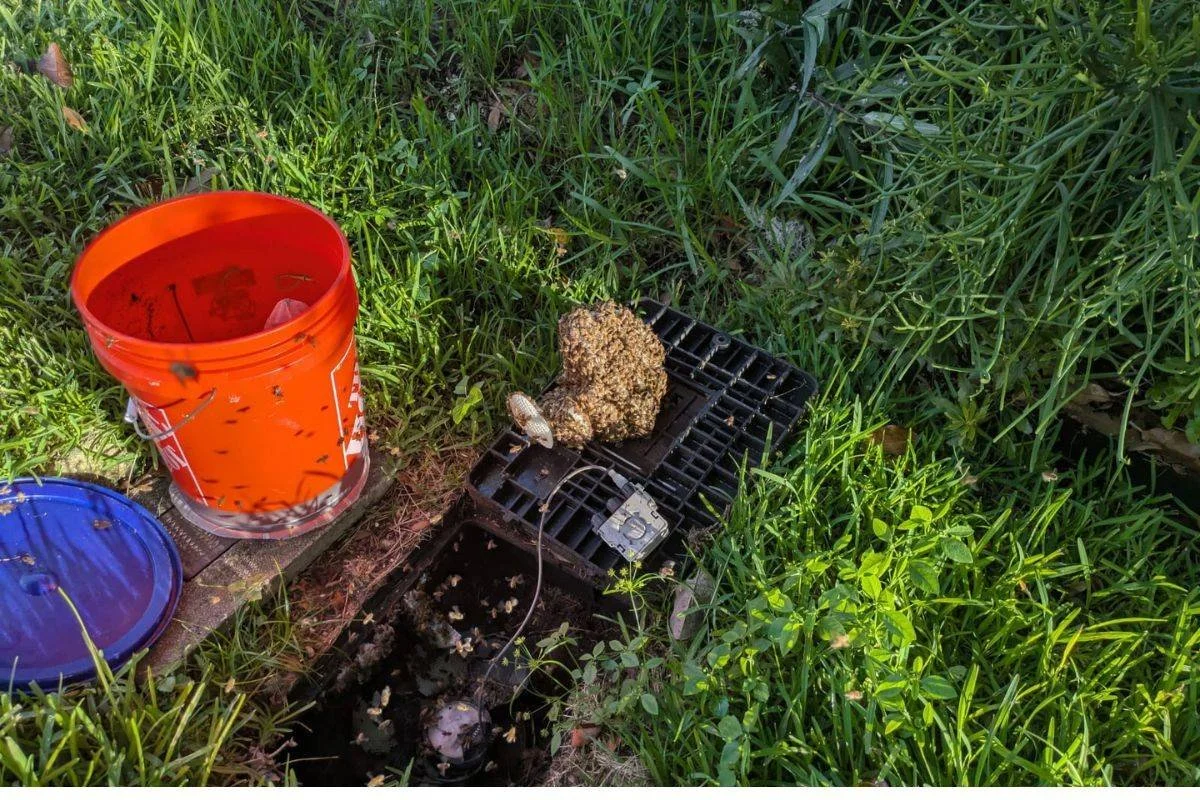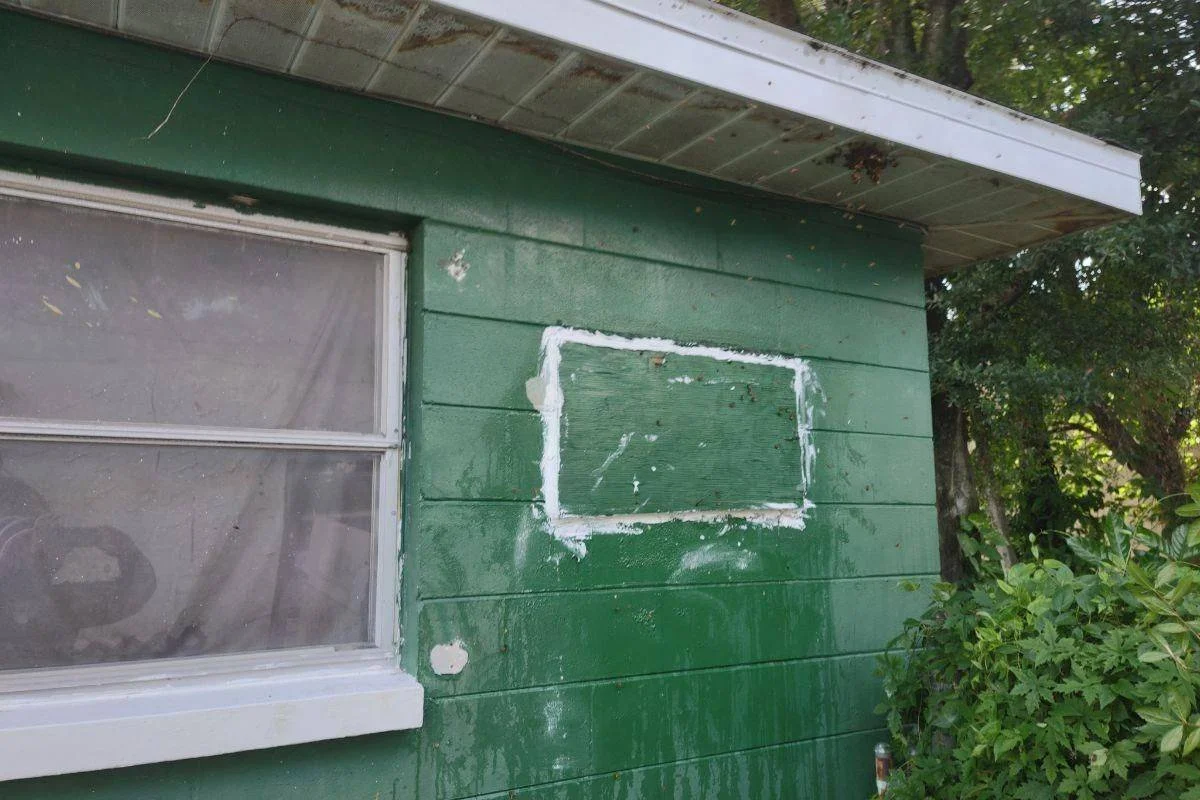🚨 Signs You May Have a Hidden Beehive in Your Home
Honeybees are incredible creatures that play a vital role in our ecosystem. But when they decide to build their hive inside your home’s walls, attic, or roof, they can cause significant issues for both your property and safety. A hidden beehive often goes unnoticed until the colony has grown large enough to become a real problem.
If you’ve seen or heard strange activity around your house lately, it might not be your imagination—it could be bees. In this blog, we’ll break down the top signs you may have a hidden beehive, where to check for it, and what to do about it.
🐝 Why Do Bees Build Hives Inside Homes?
Bees are always on the lookout for safe, dark, enclosed places to build their hives. Unfortunately, the structural cavities of homes—like wall voids, attics, and soffits—often mimic their natural nesting preferences. These areas provide the protection and warmth bees seek, especially during the spring and summer months in warmer climates like Florida.
🔍 Top 7 Signs of a Hidden Beehive in Your Home
1. Buzzing Sounds from Walls or Ceilings
One of the first and most obvious signs of a hidden hive is a persistent buzzing sound coming from inside your walls or ceiling. This noise is usually most noticeable at night or during the early morning when the house is quiet. As the hive grows, the buzzing may become louder.
Tip: Put your ear against the wall to locate the sound. If you hear a low, steady hum or buzzing, bees may have made a home inside.
2. Bee Sightings Near the Same Area Repeatedly
If you frequently see bees flying in and out of a small crack, vent, or hole on your home’s exterior—especially near the roofline or siding—that could indicate a hive nearby. Bees are creatures of habit and typically use the same entry point repeatedly.
Underground bee colony found in a water meter box during removal
Common entry points include:
Roof soffits
Chimneys
Wall vents
Gaps in siding or fascia boards
3. Dark Stains or Sticky Patches on Walls or Ceilings
As bees build their hive, honey and wax can seep through drywall, leaving dark, sticky stains. Over time, this residue can attract ants, roaches, or mold.
If you notice unexplained brown patches or honey-like ooze on your walls, especially accompanied by buzzing sounds, it’s time to call a professional bee removal service.
4. Increased Bee Activity Around the Property
Have you noticed more bees than usual in your garden, around your windows, or hovering near your house? While some bee traffic is normal in warmer months, excessive activity often means there’s a colony nearby.
You may even see dead bees near windows or doors, a clue that bees are getting trapped indoors after entering through hidden gaps.
5. Unpleasant Odors
As the hive grows, the smell from fermenting honey, wax, or dead bees can become strong—especially if the colony has been there for weeks or months. This sour or musty odor is often most noticeable on hot days and can be a key sign that a hidden hive is present inside your walls or attic.
6. Unusual Pet Behavior
Dogs and cats often sense things humans don’t. If your pet keeps scratching or staring at a specific spot on the wall or ceiling, it could be reacting to the sound or smell of bees inside. Pet behavior isn’t a guaranteed sign, but it can be an early clue worth paying attention to.
7. Sudden Structural Damage or Sagging Walls
A large beehive can weigh over 50 pounds when filled with honey and beeswax. Over time, this weight may cause drywall to sag or even collapse. If you see bulging or soft spots in your walls or ceilings, combined with any of the signs above, take action quickly.
⚠️ Dangers of a Hidden Beehive
Leaving a beehive inside your home untreated can cause several problems:
Property damage from honey leakage and mold growth
Electrical hazards if bees build near wiring or fuse boxes
Aggressive behavior if the hive is disturbed (especially Africanized bees)
Attraction of pests like ants, roaches, and rats
Decreased home value due to damage and safety concerns
🛑 What NOT to Do If You Suspect a Hidden Hive
It’s tempting to spray insecticide or seal the entrance to “solve” the problem, but this often makes things worse.
Avoid:
Spraying chemicals — this can agitate the colony and create a worse infestation.
Sealing the hive — bees will look for another way out, often ending up inside your home.
Removing the hive yourself — without proper gear and experience, this can be dangerous.
Always contact a professional for safe, eco-friendly, and humane bee removal.
🐝 Why Live Bee Removal Is the Best Solution
Wall sealed after professional bee hive removal from home
At Eco Bee Removal, we specialize in live bee relocation, not extermination. Our process:
Safely removes the bees without harming them
Preserves local pollinator populations
Cleans out the hive and honey residue
Seals the entry point to prevent future infestations
Bees are essential to our environment. Saving them through professional removal helps your home—and the planet.
✅ How to Prevent Future Bee Infestations?
Once the hive is gone, you’ll want to take steps to bee-proof your home:
Seal all cracks, gaps, and holes in walls, siding, and soffits
Install mesh over vents and chimneys
Trim trees and shrubs that touch your roofline
Avoid leaving out sugary drinks or trash that attracts bees
Regular inspections can also help detect bee activity before it becomes a serious issue.
📞 Need Help? Call Eco Bee Removal Today!
If you think you may have a hidden hive, don’t wait. The longer bees stay, the more damage they can do. At Eco Bee Removal, we provide safe, humane, and eco-friendly bee removal services throughout Miami, Sarasota, Cape Coral, Fort Myers, Naples, and nearby areas in Florida.
Contact us today for a free consultation. Your walls—and the bees—will thank you!
A hidden beehive isn’t something you can afford to ignore. From subtle buzzing sounds to visible honey stains, the signs are there—if you know what to look for. By catching the issue early and calling in professionals, you can protect both your home and the bees that help keep our world blooming.


